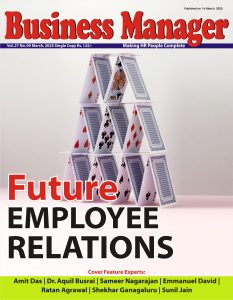The labor market for tech professionals has been hot for years. However, more recently, worker trends such as The Great Resignation, Quiet Quitting and changes in personal and professional priorities have contributed to a widening skills gap, making it increasingly difficult to hire and retain tech talent.
According to Skillsoft’s 2022 IT Skills and Salary Report, 66% of IT decision-makers face critical skills gaps in their departments worldwide. For the majority, it boils down to recruiting and retaining qualified candidates. Over 44% of decision-makers struggle to hire skilled candidates, while 33% have difficulty keeping the employees they hire. Many also cite the rate of technology change vs. development programs as a chief contributing factor.
Training also factors into organizations’ abilities to fill skills gaps. A quarter of decision-makers feel that their companies didn’t invest in training or that training wasn’t effective. They also responded that they didn’t anticipate the skills they are now lacking or failed to assess skills within their employee base.
How does the skills gap impact an organization in the long run?
By and large, skills gaps pose a risk to organizations and IT’s ability to carry out its duties. More than 98% of IT leaders agree that gaps pose a risk of some kind, with 80% indicating high or medium risk. Skills gaps also cause increased stress, delays, talent acquisition costs, and operating costs. Decreased productivity, customer satisfaction, and innovation are byproducts of an organization’s skills gap.
Nearly 50% of IT decision-makers deal with rising stress levels from existing employees. Almost 40% saw slower project resolution times, and 34% witnessed a decreased ability to meet business objectives. These factors can hamper an organization’s growth in the long run.
How to address the skills gaps?
The irony is that most decision-makers who experience skills gaps already know the answer: training, upskilling, reskilling, and development. Continual learning is the one solution guaranteed to reduce skills gaps, and many IT leaders recognize that they must nurture their current staff with time or resource investments in professional development to unlock opportunities to advance and grow.
Continual learning is the one solution guaranteed to reduce skills gaps, and many organizations recognize the need of developing their current staff in professional development to unlock opportunities to advance and grow.
To address skills gaps and today’s retention challenges, consider the following steps:
- Align on your priorities– Have a candid discussion with your business partners grounded in the organisation’s near-term and long-term skill requirements and inventory. Ensure that the priorities of your learning programs are aligned with the skill demands and commercial strategy of the business. Express these priorities in a simple skill taxonomy that illustrates the obvious value to your business partners while mapping career pathways for your workforce.
- Baseline your organization’s skills–Some organizations are in the dark about their skills gaps. This leaves room for gaps to threaten operations or elevate risk within the organization. As a result, organizations must first identify where current and potential skills gaps lie and accurately assess learners’ skill levels to deliver relevant content that aligns with their readiness and goals. In other words, a skills-based strategy begins with gaining deep visibility into the skills position across the enterprise. This can be done through benchmark assessments to explore all employees’ skills and skill depth to understand the skills landscape and align workforce skills with business strategies and critical growth initiatives.
- Develop and launch learning programs that squarely address the priorities– Once existing skills are assessed and defined, leaders must collaborate with their counterparts in learning and development to hone training curricula that target key skill areas. The benefits of this partnership can manifest in many ways, including better adoption of training programs. Additionally, leaders should invest in new technologies and work with their partners and stakeholders to design training programs. These programs should be highly relevant, applicable, and accessible to your team.
- Personalize the experience for your learners– While many professionals agree they want opportunities for hands-on practice, learning preferences vary from person to person. What’s more, their ambitions are unique. Some want to build new skills; others want to earn a certification or take on different responsibilities at work. Leaders and managers should bring up career development in their meetings with staff and talk to them about their goals and how they can support them. Then, provide training that’s tailored to them.
- Measure the ROI with agreed-to metrics – Define what success looks like with your partners and stakeholders. Track your team’s progress to understand how training impacts their careers, projects, initiatives, and resources.Continue to iterate over time to adapt training to the needs of your team and that of the greater organization. Doing this alongside a mindset that focuses on employer-employee growth, organizations are much better placed to address the skills gap and build a resilient workforce that survives and thrives, even during challenging times.
Stay connected with us on social media platform for instant update click here to join our LinkedIn, Twitter & Facebook
























Add comment